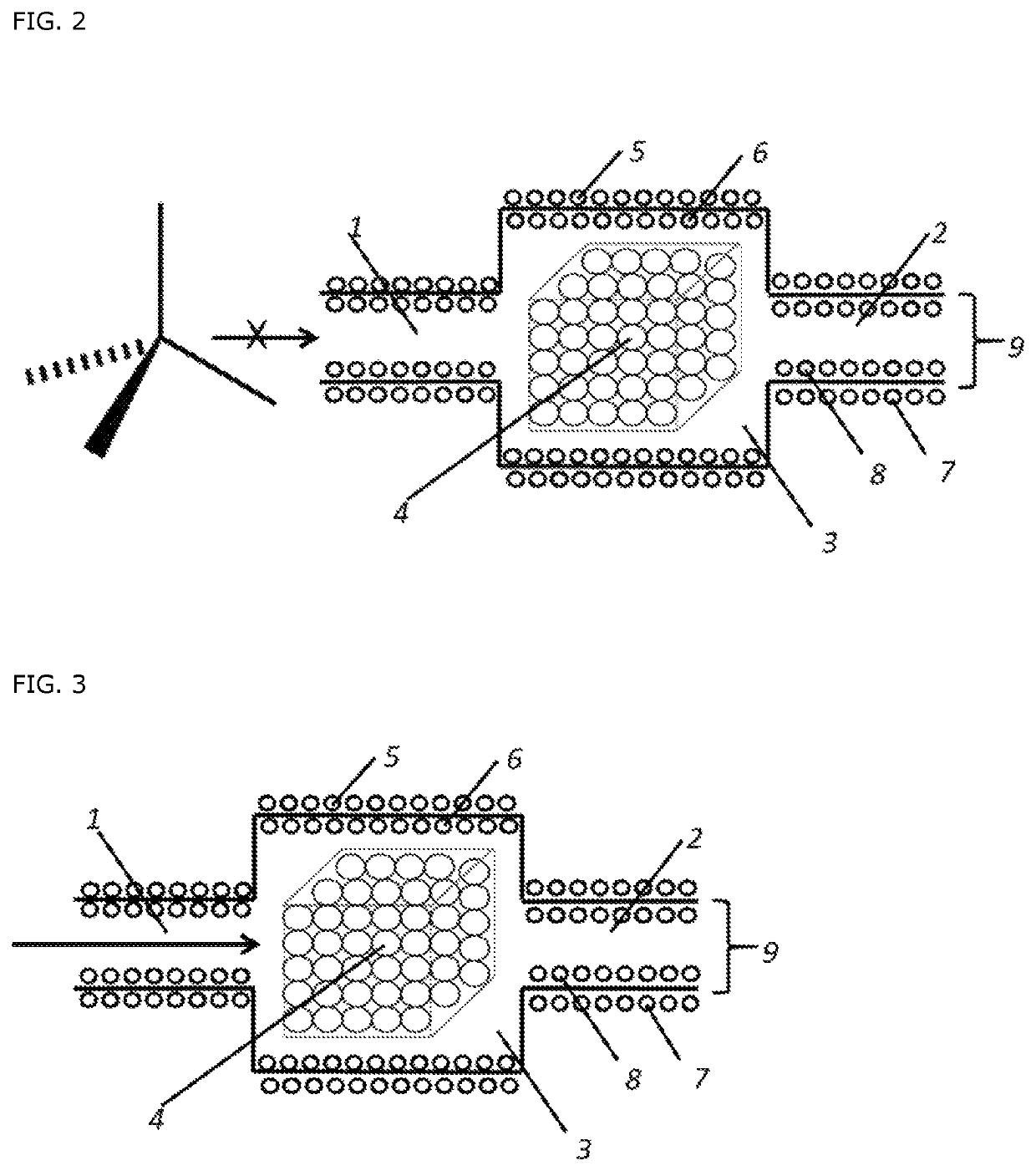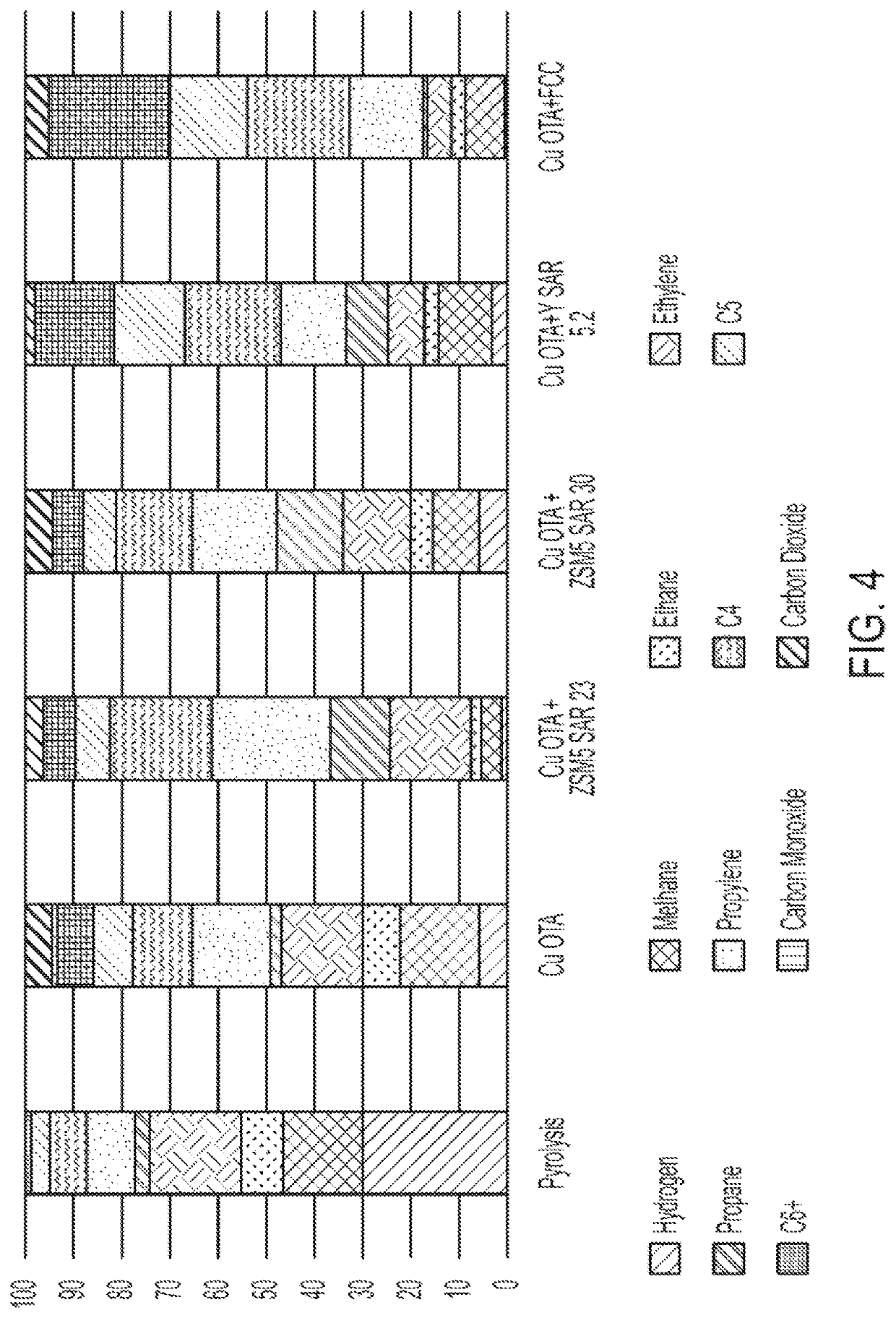Oxidative cracking of hydrocarbons
a hydrocarbon and oxidative cracking technology, applied in the field of olefin production, can solve the problems of high energy consumption, high cost, high energy consumption of steam cracking process, etc., and achieve the effects of reducing safety risks, avoiding heat management issues of catalytic pyrolysis processes, and improving heat management and balan
- Summary
- Abstract
- Description
- Claims
- Application Information
AI Technical Summary
Benefits of technology
Problems solved by technology
Method used
Image
Examples
example 1
ive)
[0122]A reactor schematically shown in FIG. 6 was charged with 5 g of gamma alumina, average particle size of 44 micron. The charge was fluidized with a 200 ml / min upward flow of nitrogen. The reactor was brought to 600° C. with an external electrical heater. A 0.5 g charge of high-density polyethylene (HDPE) was introduced from the top of the reactor and brought in contact with the bubbling bed of alumina. The gas and liquid products resulting were analyzed by GC. Results are in FIG. 4, labeled pyrolysis. The plastic was >95% converted in 5 minutes. The product contained 17 mole % hydrogen and 6 mole % ethylene.
example 2
n)
[0123]A catalyst, i.e., a metal oxide oxygen transfer agent, was prepared that contained 0.5% MnO2, 11% CuO, 18% CaO and the balance gamma alumina by weight. The gamma alumina functions as the support for the metal oxide. The metal oxide oxygen transfer agent was charged to the reactor and run with HDPE, under the same conditions as in Example 1. The plastic was >95% converted at 600° C. in 4 minutes. The product, shown in FIG. 4, as Cu OTA, contained 9% hydrogen and 15% ethylene. Compared to Example 1, this catalyst produced less hydrogen because the in-situ produced hydrogen was converted to water by the metal oxide. The color of the metal oxide catalyst changed from dark grey to pink, indicating its reduction. The ethylene yield was higher than in Example 1, indicating the beneficial effect of the catalytic metal oxide oxygen transfer agent (OTA).
example 3
n)
[0124]A catalyst, i.e., a metal oxide oxygen transfer agent, was prepared that contained 0.5% MnO2, 11% CuO, 18% CaO and the balance gamma alumina support by weight. This catalyst was mixed with ZSM-5 zeolite with a silica to alumina ratio of 23. The mixture of metal oxide oxygen transfer agent (catalyst) to zeolite was 1 to 1 by weight. The mixed catalyst was charged to the reactor and run with HDPE, under the same reactor conditions as in Example 1. The plastic was >95% converted at 600° C. in 4 minutes. The product, shown as Cu OTA+ZSM5 SAR 23 in FIG. 4, contained 1.5% hydrogen and 17% ethylene. Compared to Examples 1 and 2, this physical mixture of the metal oxide oxygen transfer agent and the ZSM-5 zeolite produced less hydrogen because the in-situ produced hydrogen was converted to water by the metal oxide catalyst. The color of the metal oxide catalyst changed from dark grey to pink, indicating its reduction. The ethylene yield was higher than in Example 1, indicating the b...
PUM
| Property | Measurement | Unit |
|---|---|---|
| weight average molecular weight | aaaaa | aaaaa |
| pressure | aaaaa | aaaaa |
| temperature | aaaaa | aaaaa |
Abstract
Description
Claims
Application Information
 Login to View More
Login to View More - R&D
- Intellectual Property
- Life Sciences
- Materials
- Tech Scout
- Unparalleled Data Quality
- Higher Quality Content
- 60% Fewer Hallucinations
Browse by: Latest US Patents, China's latest patents, Technical Efficacy Thesaurus, Application Domain, Technology Topic, Popular Technical Reports.
© 2025 PatSnap. All rights reserved.Legal|Privacy policy|Modern Slavery Act Transparency Statement|Sitemap|About US| Contact US: help@patsnap.com



